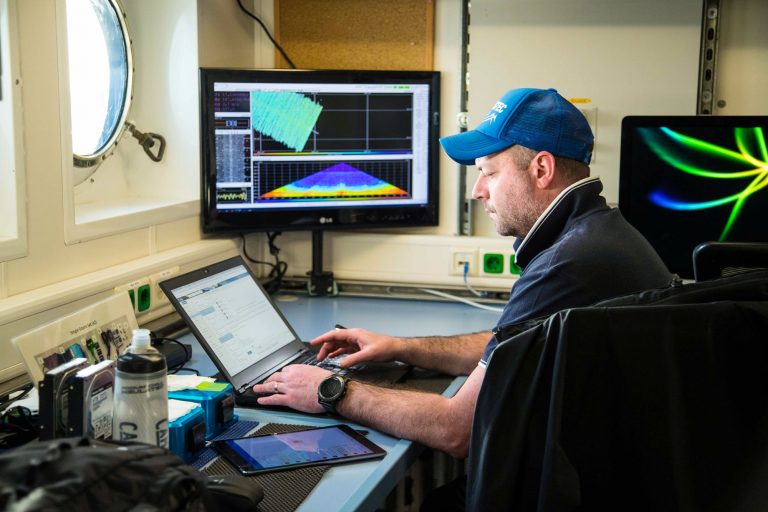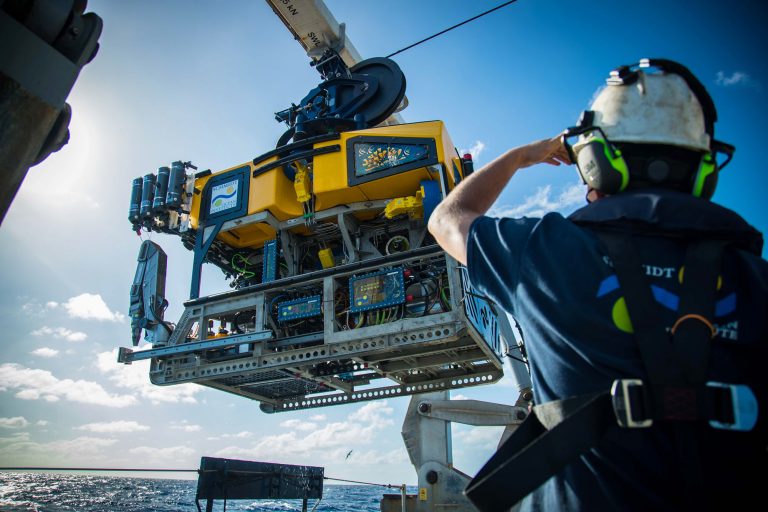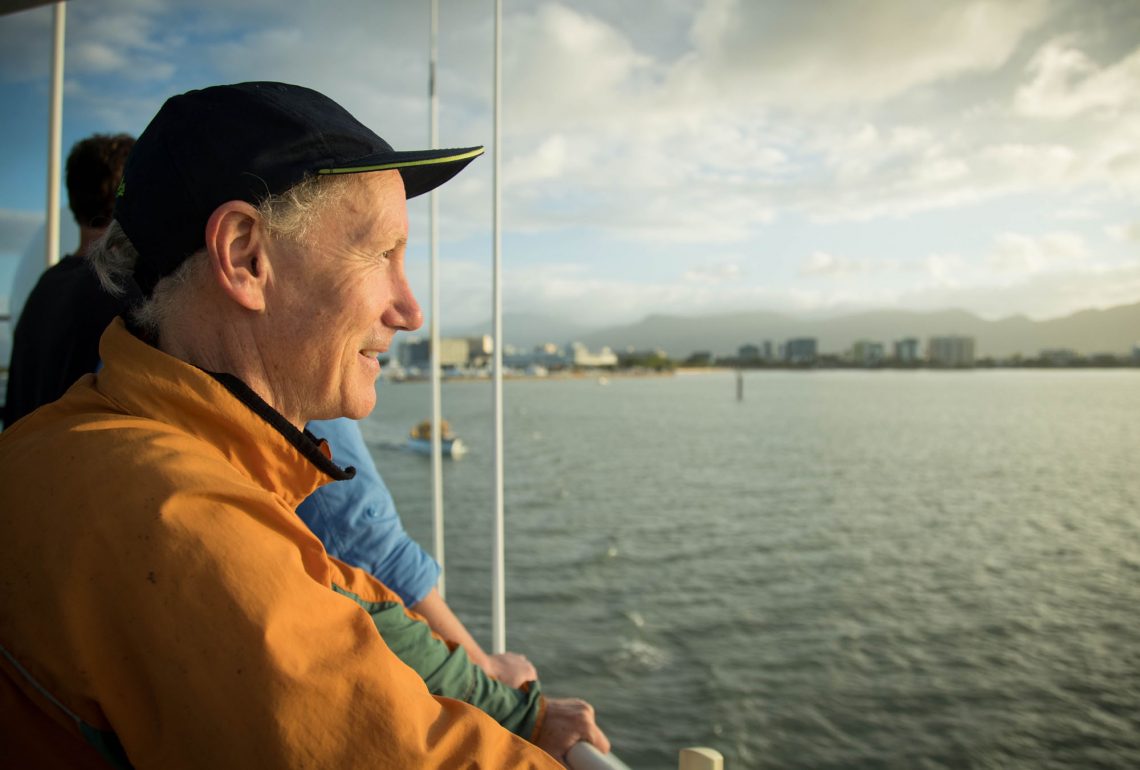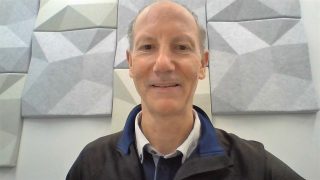The science team on Falkor is really excited to be heading off on this unique voyage of research and discovery in the Coral Sea and outer edge of the Great Barrier Reef. We will explore dark, poorly known deep areas, down to a kilometre below the surface, in one of the world’s most remote and diverse tropical marine regions. We aim to capture high-resolution footage of its biota using the unique capabilities of Falkor, including its deep water robot SuBastian, to acquire samples with great precision and care. The cruise truly is the opportunity of a lifetime for the team, especially our five grad students!

Goals and Headings
Our research focus is on the long-term processes that have formed and sustain the habitats and patterns of biodiversity in the park, with a focus on the margins of platform reefs. There are over thirty of these massive accumulations of lithified, biologically produced calcium carbonate sediment, perched on ancient bedrock, that record the growth and erosion of coral reefs over millions of years. Importantly, we can also determine whether the deeper reefs provide refuge from the rapidly warming ocean for benthic species such as corals. This archipelago of steep-sided, mid-ocean reefs is a defining feature of the Coral Sea Marine Park.

Our cruise will provide a unique inventory of environmental assets, such as cool-water corals, in the deep-water realm of the marine park. This will represent the first baseline of information on the environmental conditions of seabed communities at a range of sites that can be revisited to monitor future change. Building this capability to monitor is particularly important for informing decisions on the management of the Marine Park, both in terms of optimising conservation of its assets, as well as better enabling the sustainable management of a range of important activities in the park, including dive and recreational fishing charters, commercial fishing and defense.
Fresh Start
It is an amazing feeling to get to the point where our cruise is finally departing Cairns, after more than a year of developing the proposal, pulling the science team together and planning field activities. This has included dealing with a range of challenges, in particular travel restrictions due to the terrible COVID-19 pandemic. Now, as Falkor leaves the quayside and slowly heads out of Cairns Harbour, I am feeling not just a sense of excitement but also gratitude to the Schmidt Ocean Institute and importantly, to my family, friends and work colleagues that have enabled me to leave behind many of the responsibilities and duties of normal live to spend a few weeks exploring the depths of the Coral Sea, thank you so much! Now onwards with the adventure!


